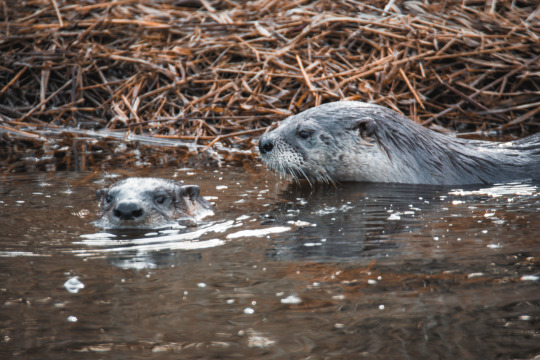#Lontra canadensis
Photo

A North American river otter (Lontra canadensis) in Oregon, USA
by Jon Nelson
#north american river otter#otters#mustelids#lontra canadensis#lontra#mustelidae#carnivora#mammalia#chordata#wildlife: oregon#wildlife: usa
130 notes
·
View notes
Photo

North American River Otter
35 notes
·
View notes
Text

6 notes
·
View notes
Photo
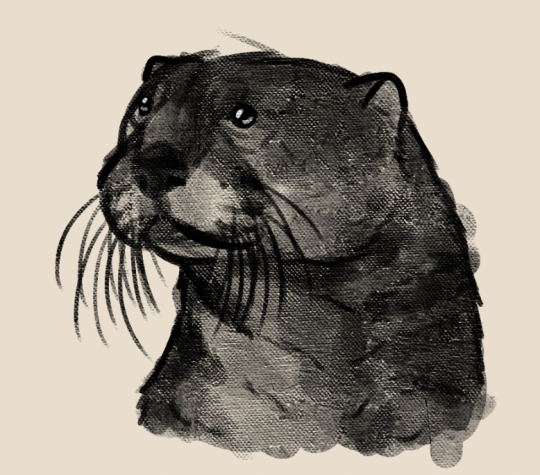



oiter
#otter#river otter#lontra canadensis#mustelids#mustelidae#art#im trying so fucking desperately to distract myself from the bullshit kanye just spewed with these otters
62 notes
·
View notes
Text



pictures of the river otters (lontra canadensis) at my local zoo playing together 🦦
something interesting about these guys: river otters have been observed to have an incredibly diverse diet which includes mostly fish, but also freshwater clams, amphibians like frogs and salamanders, snails and even small turtles! there have also been occasional reports of them eating small mammals like mice and squirrels and small birds.
6 notes
·
View notes
Video
North American River Otter by Coyoty
Via Flickr:
Lontra canadensis. At the Roger Williams Park Zoo in Providence, RI.
#Roger Williams Park Zoo#Roger Williams Park#Providence#Rhode Island#RI#zoo#nature#animal#mustelid#otter#river otter#North American river otter#Lontra canadensis#mammal#wild#life#wildlife#sleeping#New England#fauna#park#flickr
0 notes
Text
Animal of the Day!
North American River Otter (Lontra canadensis)
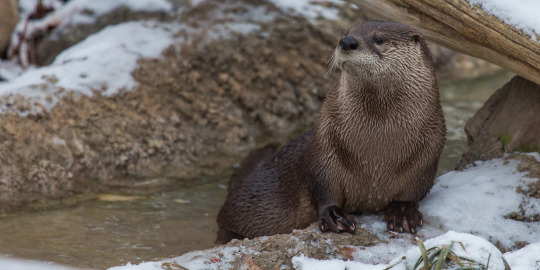
(Photo from Smithsonian National Zoo)
Conservation Status- Least Concern
Habitat- Northern North America; Eastern North America
Size (Weight/Length)- 12 kg; 1 m
Diet- Fish; Insects; Crayfish; Amphibians; Birds; Small mammals
Cool Facts- Despite having possibly the cutest face in the animal kingdom, don’t let their looks fool you. North American river otters are fantastic predators. Living in small family groups, these otters eat practically any animal they can get their claws on. During sunny days, North American river otters sunbathe on rocks and groom each other for hours to keep their fur waterproof. Pregnant females seek out empty beaver dens to have their babies, often given support by the rest of their family, usually sisters. At two months old, mothers teach their pups how to swim and hunt. Despite almost going extinct in the 1900s due to the fur trade, today North American river otters flourish thanks to reintroduction efforts and bans on hunting.
Rating- 13/10 (A little smelly but adorable regardless.)
#Animal of the day#Animals#Mammals#Otters#Saturday#January 21#North American river otter#biology#science#conservation#the more you know
231 notes
·
View notes
Note



What are these (sorry theyre dead). Found in central texas, my mom thinks theyre otters but theyre not native to our region to my knowledge? They were REALLY big though. easily five inches to seven inches wide and over a foot long
Oh man... These are North American River Otters (Lontra canadensis).
There are otters in Texas - they're rarer in some regions, but it's still possible to find them. But it's strange to find so many of them dead like this, in such close proximity to each other. As far as I'm aware, it's legal to hunt them, but they're usually hunted for their fur, so I'm not sure why someone would just dump the bodies.
#dead animal cw#cw animal death#id#asks#i highly doubt they died side by side naturally#like surely someone mustve put them there#but why?#otter#american river otter
19 notes
·
View notes
Photo
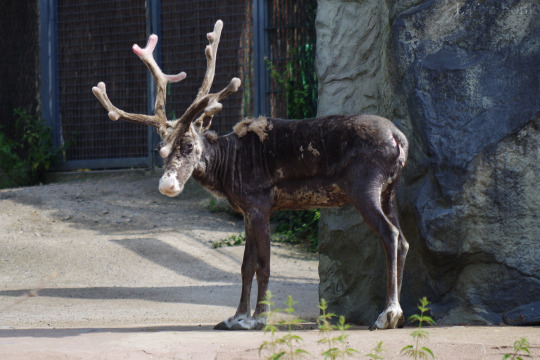
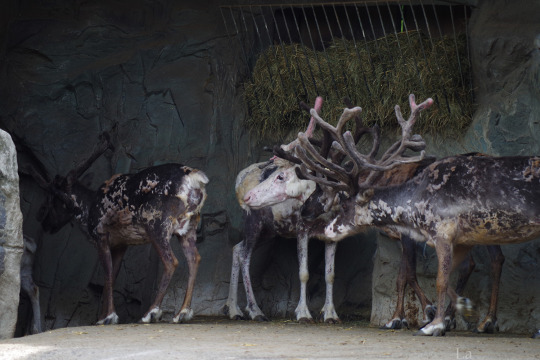
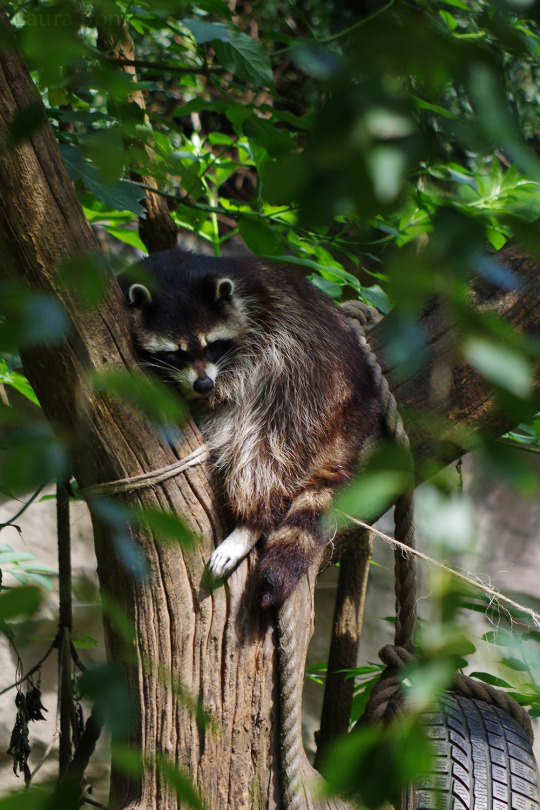
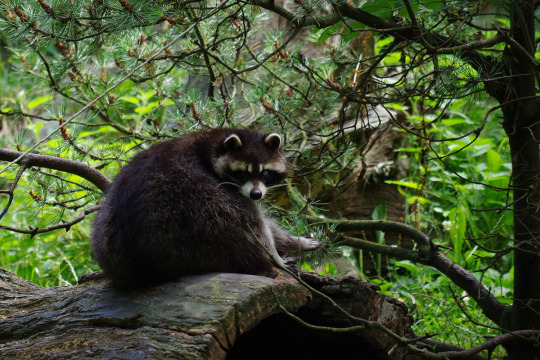






Pensioner excursion ZOOM Erlebniswelt Gelsenkirchen - Part 1/?
Alaska
Way back in July 2017 I went on a pensioner excursion with some friends from my master’s classes. We grabbed our bikes and went to the largest zoo in our area, visited the zoo, had a picnic and biked back home.
The ZOOM was significantly renovated and rebranded (previously known as Ruhr Zoo) from 2004-2010 and now consists of the three ‘expeditions’: Alaska, Asia and Africa.
Reindeer/Caribou (Rangifer tarandus): The reindeer were looking pretty gnarly as they were shedding their fur, but it was still apparent that there are a couple of white animals in the herd
Raccoon (Procyon locor): The raccoons were my favourites in this area, they were very relaxed and obviously a bit sluggish in the summer heat. Their enclosure was densely planted and I don’t think we spotted even half of the group.
Eastern/timber wolf (Canis lupus lycaon): Most of them were laying together in a shadowy corner, but I was able to get a shot of one with a very nice dark dappled coat.
Kamtchatka brown bear (Ursus arctos beringianus): The Kamtchatka bear is one of the larger subspecies of brown bears and is found in the far east of Russia.
California Sea Lions (Zalophus califiornianus): Every time I’ve visited this zoo most of the sea lions are laying about on their rocks regardless of the weather.
North American River Otter (Lontra canadensis): All kinds of otters are a delight to watch, but I think most of them were also hiding somewhere in the shadows.
We were pretty sad to miss some of the animals in the area (especially the porcupines, beaver and lynx) but it was way too hot and unfortunately a saturday so there were too many people to comfortably linger at the enclosures.
Next up: Asia
#nature photography#zoo#reindeer#raccoon#brown bear#sea lion#otter#zoom gelsenkirchen#zoom erlebniswelt#july#zoology#2017
123 notes
·
View notes
Photo
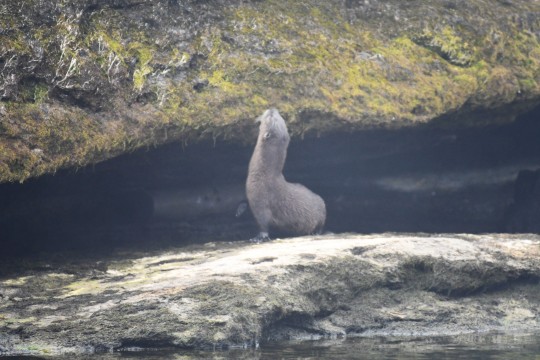

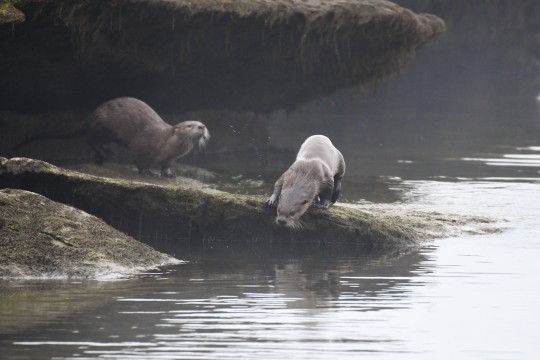
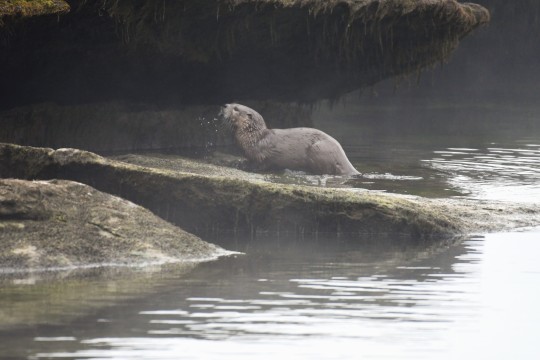

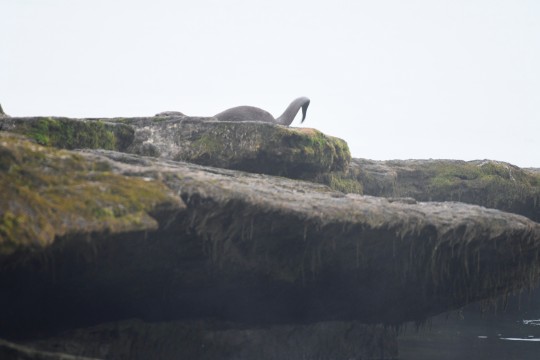

River Otters ( Lontra canadensis)
10/22
41 notes
·
View notes
Text
[CM] Mammals - Not Prey
More mammals! This time I’ll be going into some non-prey species. Most of these can either kill Clan cats or compete with them for food, but others are just harmless residents of the territory. Below are translations for foxes, raccoons, and beavers, and some animals with the same name as in base Clanmew.
Red fox (Vulpes vulpes) - Aowao*
Cross fox (Vulpes vulpes) - Aowapen (aowao*, konpen*)
Black fox (Vulpes vulpes) - Awrrim (aowao*, grrim*)
Cat-sized predators. Foxes rarely attack or kill cats - when confrontations do occur, one party usually leaves to avoid conflict. The majority of foxes on ClayClan territory are the traditional red, but some may express cross coloration, and even fewer are black! The rarity of black foxes means they’re often treated as an omen.
River otter (Lontra canadensis) - Syiu*
Large, long, and smooth. Though river otters rarely pose a threat to cats, they’re a top competitor when it comes to hunting fish! They’re most frequently seen near the lake, but aren’t uncommon in rivers, either.
Ermine (Mustela erminea) - Rikkik*
About half the size of a cat, depending. Ermines can be hunted, but their feisty attitude and sharp teeth deter most warriors. They compete with cats for small mammalian prey like mice, voles, and squirrels.
Mink (Neovison vison) - Nhee*
Cat-sized and dangerous, mink will attack and kill cats if threatened! They’re also a fishing competitor like otters.
Raccoon (Procyon lotor) - Pwyyoshep (pwyyarr*, yoshenp*)
Large and bulky. Raccoons are seen as a bit odd, due to their strange paws, but they’re otherwise a peaceful species. Cats and raccoons generally coexist without issue, though small fights aren’t unheard of.
Beaver (Castor canadensis) - Oobrashk
Very large. Generally harmless, they won’t bother cats unless they’re bothered first. I haven’t decided yet if there’s a beaver dam on or near ClayClan land... either way, they definitely show up to gather wood and feed.
4 notes
·
View notes
Text
Connecticut’s Beardsley Zoo Has –One, Two, Three…Four! River Otter Pups
Connecticut’s Beardsley Zoo is happy to announce the birth of four North American river otter pups (Lontra canadensis), born on March 23, 2023. After a two-month gestation period and a few days past her fourth birthday, Tahu gave birth to her litter of four. Freshwater river otters give birth on land, in dens, where the pups remain secluded with their mother for a period of about eight…

View On WordPress
2 notes
·
View notes
Text
anyways, of course, daemons:
Sam: Ariel - Rufous-legged owl (Strix rufipes)
Al: Lucida - North American river otter (Lontra canadensis)
How do daemons work in this universe?
Well, we're not boring, so it is a true body swap at all times, instead of flipping back and forth depending on what the story needs. So every time they leap, Ariel has to adapt to an entirely new form.
And no, Sam and Ariel don't see what they really look like when they look at eachother, because that's not how body swaps work. Sam does not remember what his own face looks like, and neither he nor Ariel remember what she settled as, and Al and Lucida can't tell them.
the same rules apply to people they leap into - they appear in the waiting room in Sam and Ariel's bodies, as a true body swap. No chickening out or changing the rules if it's inconvenient.
#obligatory ''but what if they had daemons''#Rjalker watches Quantum Leap#Quantum Leap but with daemons#because daemons are fun
3 notes
·
View notes
Photo

buddy having lunch
15 notes
·
View notes
Text
lontra-anã-oriental (amblonyx cinereus), são encontradas em vários paises da Ásia, gostam de água doce.
lontra-africada-sem-garras (aonyx capensis), como o nome diz, não tem garras, e são destribuidas em vários paises africanos. aquáticas e raramente deixam a água, vivem mais em água salgada mas é indispensável a água doce. são uma das maiores em comprimento.
lontra-marinha (enhydra lutris), lontras que vivem em áreas rochosas que tem a presença de algas, mas as vezes pode não ter, podem ir até 50m mas nadam em profundidades menores, ficam em espaços marinhos próximos as costas.
lontra-de-pescoço-pintado (hydrictis maculicollis), ela fica na africa central, ali na africa subsaariana, espécie de água doce! ela é pequenininha, mede no maximo 1m.
lontra fluvial norte-americana (lontra canadensis), aquática de água doce ou salgada, suscetível a poluição, fica no ligar dependendo da qualidade da comida.
chugungo (lontra felina), ela habita exclusivamente o ambiente marinho, e é super ágil. "Desloca-se em uma faixa de até 30 m em terra sobre o nível do mar e de 100 a 150 m de profundidade no mar, principalmente em áreas rochosas de ventos fortes e algas abundantes."
lontra-neotropical (lontra longicaudis), ja falei sobre ela! é uma queridinha, eu a amo.
lontra-do-rio-sul (lontra provocax) nativa da argentina e chile.
lontra-euroasiática (lutra lutra), vivem na europa, asia e africa, o peixe faz parte de 80% de sua dieta, o resto é o que tme disponível no local que habita.
lontra-de-nariz-peludo (lutra sumatrana), nativa da Ásia.
lontra-de-pelo-liso (lutrogale perspicillata) sul da Ásia! se movem muito bem em água e em terra.
ariranha (pteronura brasiliensis), também ja falei dela, muito muito interessante!
0 notes


